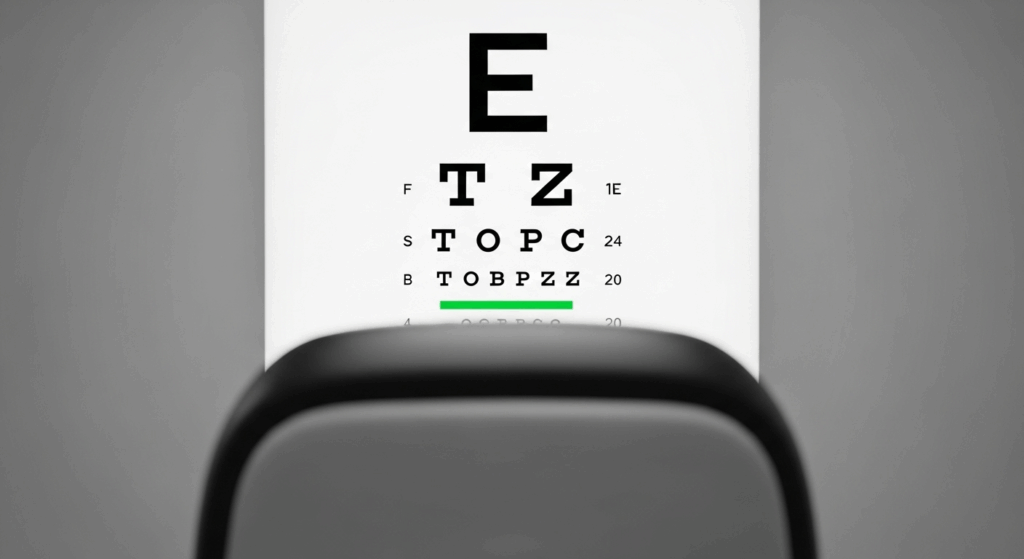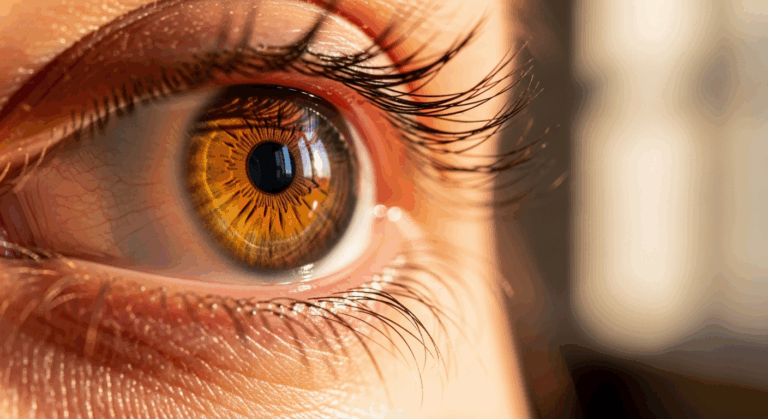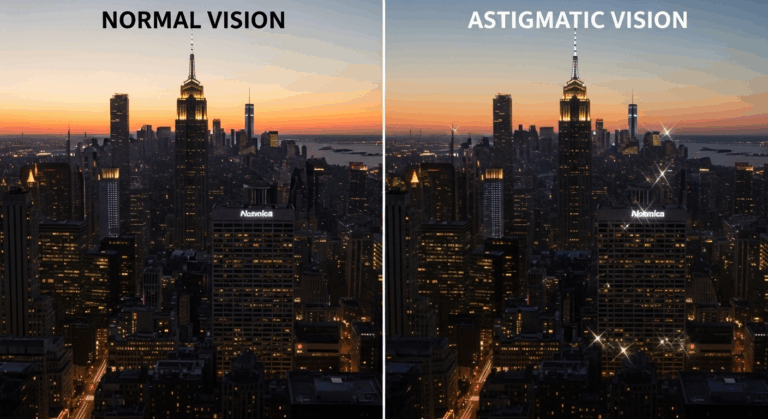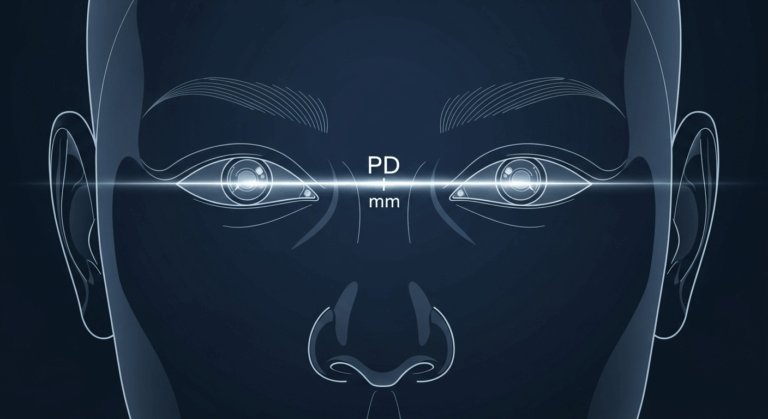You’re sitting in the optometrist’s chair or nervously squinting at a chart at the DMV, and someone says, “You’ve got 20/40 vision.” Your first thought might be, “Okay… is that good? Is that bad? Do I need glasses right now?”
It’s a super common question we hear all the time. Those numbers can feel a bit abstract, but understanding them is the first step to taking control of your eye health. So, let’s clear up the confusion, break down what 20/40 vision looks like in the real world, and tackle the ultimate question: is it time for glasses?
What Does 20/40 Vision Actually Mean?

Let’s not get bogged down in jargon. Think of it like this: the term “20/40” comes from the classic Snellen eye chart (you know, the one with the big “E” at the top). It’s a simple way to measure your visual acuity, or the sharpness of your vision.
Breaking Down the Numbers
It’s actually pretty straightforward once you know the formula:
- The first number (20): This is your distance from the chart, which is almost always 20 feet in the United States. This number doesn’t change.
- The second number (40): This is the key part. It means that you need to be at 20 feet to clearly see a letter that a person with “normal” 20/20 vision can see from 40 feet away.
So, in a nutshell, objects that are 40 feet away look as clear to you as they would to someone with perfect vision standing a whole 80 feet away. Your world isn’t a total blur, but it’s definitely missing some of the crisp, high-definition detail.
So, Is 20/40 Vision Bad?
This is the question on everyone’s mind, and the answer isn’t a simple “yes” or “no.” It’s better to think of it as “less than perfect.”
It’s definitely not considered legal blindness or a severe impairment. In fact, many people function quite well with 20/40 vision without even realizing their eyesight isn’t “normal.”
It’s All About Context
Whether 20/40 vision is a problem really depends on your life and your needs:
- Driving Requirements: Here’s some good news! In most states, 20/40 vision is the minimum requirement to get an unrestricted driver’s license. So, you can likely pass the vision test at the DMV. However, driving at night or in poor weather might still feel challenging.
- Daily Activities: You might start to notice small frustrations. Maybe you have to squint to read street signs, you can’t quite make out the score on the TV from across the room, or you get headaches after a long day of trying to focus on distant objects.
- Compared to 20/20: While not “bad,” it’s important to remember that it’s half the visual acuity of 20/20 vision. That’s a significant difference in clarity.
What Does 20/40 Vision Look Like?

Imagine you’re watching a movie in high definition (that’s 20/20 vision). Now, imagine someone toggles the setting down to standard definition. You can still see what’s happening, you can follow the plot, but the sharp edges are gone. The details are a bit soft and things just aren’t as crisp.
That’s a great analogy for 20/40 vision. You can function, but you’re missing out on the finer details of the world around you. Facial expressions from across a large room might be hard to read, and the leaves on a distant tree might blend into a single green shape instead of individual points.
The Big Question: Do You Need Glasses with 20/40 Vision?

Alright, let’s get to the practical advice. The decision to get glasses for 20/40 vision is often a personal one, but here are some strong indicators that it’s time.
When Correction is a Good Idea
You should seriously consider glasses or contacts if:
- You’re Experiencing Eye Strain: Do you get headaches, tired eyes, or find yourself squinting a lot? That’s your eyes working overtime to compensate for the blur. Glasses do the heavy lifting so your eyes don’t have to.
- It Affects Your Safety: While you might pass the driving test, do you feel 100% confident reading signs quickly or spotting hazards at night? If there’s any doubt, corrective lenses are a must for your safety and the safety of others.
- Your Job or Hobbies Demand It: If you’re a student trying to see the whiteboard, an athlete trying to track a ball, or just someone who loves watching movies in perfect clarity, glasses will make a world of difference.
- You Simply Want to See Better: There’s nothing wrong with wanting to experience the world in all its high-definition glory! Many people with 20/40 vision are shocked at how much detail they were missing once they try on their first pair of glasses.
Your Corrective Options
If you decide to correct your vision, you have great options:
- Eyeglasses: The easiest and most common solution. A pair of glasses for distance vision can be worn as needed—for driving, watching TV, or attending a concert.
- Contact Lenses: A fantastic choice for those who want clear vision without wearing frames, especially for sports and active lifestyles.
- Refractive Surgery: Options like LASIK might be a possibility for a more permanent solution, but this is a conversation to have with your ophthalmologist.
Your Vision, Your Decision
Having 20/40 vision places you in a bit of a gray area. You’re not seeing perfectly, but you might be getting by just fine. The most important thing is to have a comprehensive eye exam with an optometrist. They can confirm your prescription, check for any other eye health issues, and give you a professional recommendation tailored to your unique lifestyle.
Ultimately, seeing the world clearly and comfortably is a quality-of-life issue. Why settle for standard definition when you can have HD?



